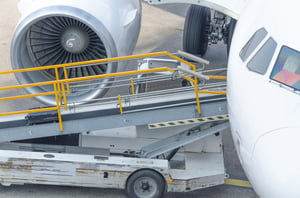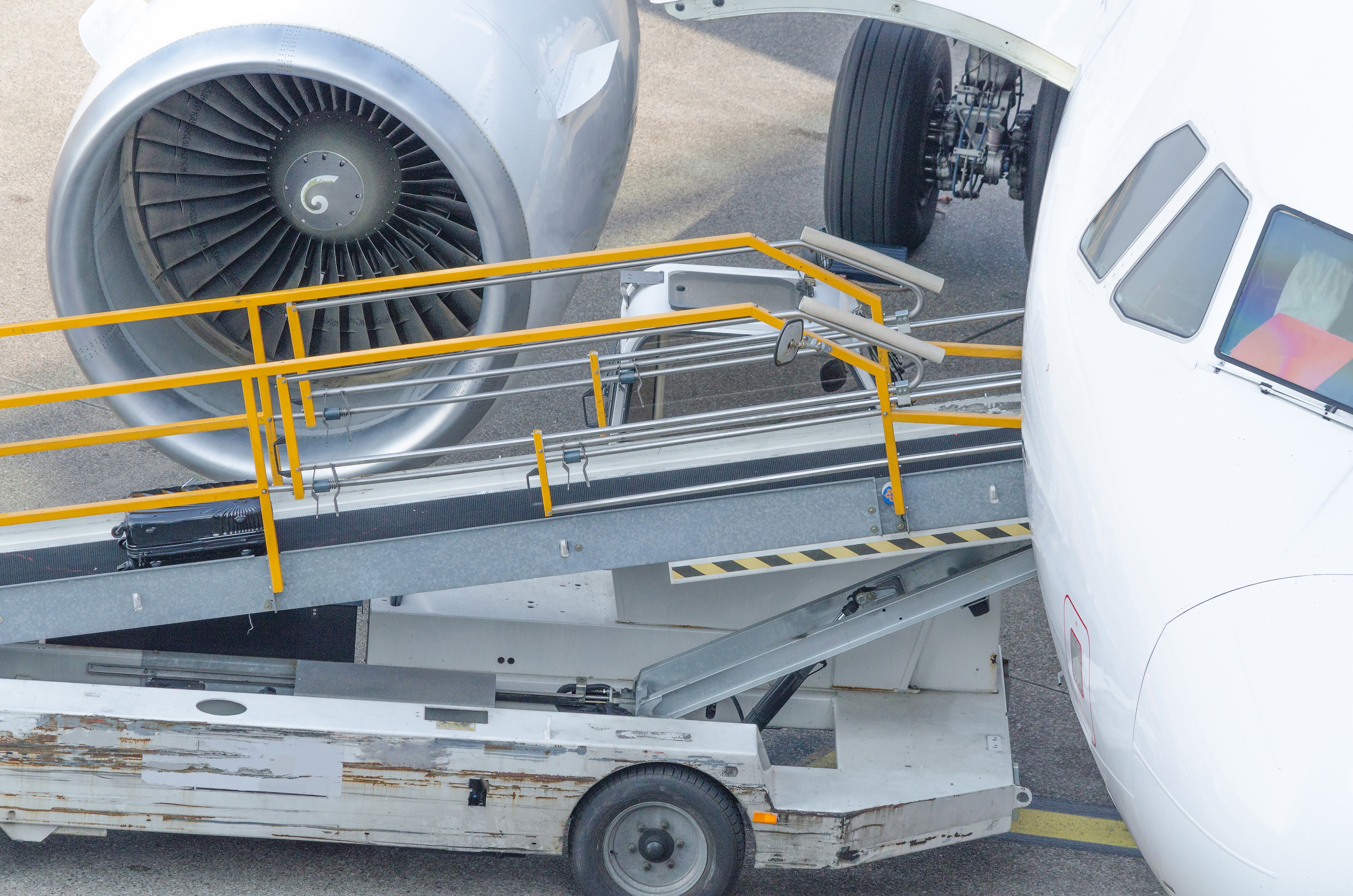Airport ramp equipment plays an important role in the loading and unloading of cargo and passenger bags each day at airports across the world.
Every year, in fact, nearly $6.8 trillion worth of goods are shipped by air globally. In the United States alone, more than 600 million passengers travel every year. And according to The National Academies of Science, Engineering and Medicine, each passenger checks an average of 0.8 to 1.8 bags. Even on the lower end of that range, that’s still more than 480 million bags checked every year in the United States.
In addition to the loading and unloading of cargo, airport ramp equipment is used to transport baggage, mail and other cargo from the airport terminal to the plane or from the plane to the airport terminal.
Choosing a battery that is safe and efficient is critical to handling the volume of cargo the airline industry sees each year. Although, traditionally, ground support equipment has been powered by gasoline, liquid petroleum gas (propane) or diesel fuel, electric airport GSE is being incorporated into more airport fleets because of their increased efficiency, better performance and zero carbon emissions.
When it comes to powering electric GSE, however, which type of battery is the best battery for airport ramp equipment?
Today’s electric GSE is typically powered by lead acid batteries. However, lithium-ion batteries are quickly becoming the battery of choice for ground support equipment operators. Here are some of the reasons why lithium-ion batteries are the best choice for airport ramp equipment.
Higher Levels Of Efficiency
 Airport ramp equipment like container loaders and belt loaders must maintain high levels of efficiency to keep the same rigorous schedules as airlines. Both of these pieces of equipment help airport ground crews to load and unload cargo and baggage.
Airport ramp equipment like container loaders and belt loaders must maintain high levels of efficiency to keep the same rigorous schedules as airlines. Both of these pieces of equipment help airport ground crews to load and unload cargo and baggage.
Lithium-ion batteries can be as much as 50% more energy efficient compared to lead acid batteries while still maintaining high levels of performance.
Lithium-ion batteries can be safely discharged down to 20% capacity as well, compared to only 30% for lead acid. So, ground support equipment operators will see longer periods of operation because they can use more of each battery’s available capacity.
Faster Charge
With nearly 16 million flights handled by the Federal Aviation Administration each year, ground crews often operate around the clock.
In fact, most large and medium-sized airports handle cargo and passenger planes that arrive and depart throughout a 24-hour period. Even some smaller airports have ground support crews that perform routine maintenance and ready airplanes for the next morning’s flights throughout the night.
It is important for ground crews to have continuous access to the ground support equipment they need to meet the requirements of a fast-paced environment … an environment with little downtime.
Lithium-ion batteries help meet this need because of their remarkably fast charging time. They can be opportunity charged throughout the day or evening because they take just 1 to 2 hours to charge. Lithium-ion batteries can also be partially charged without damaging the battery.
Lead acid batteries cannot be opportunity charged. They must go out of service for approximately 8 hours for charging and another 8 hours for a cooldown period.
Lithium-ion batteries also typically run for about 7.2 hours before they need to be charged (compared to 5.4 hours for lead acid batteries). This is important because not only do lithium-ion batteries charge more quickly, they do not need to be charged as frequently.
Better Cold Weather Performance
 Airport ground support equipment must operate in extreme climates on both ends of the spectrum. Especially in cold climates, battery performance can suffer. This can lead to the shutdown of crucial equipment for airport operations.
Airport ground support equipment must operate in extreme climates on both ends of the spectrum. Especially in cold climates, battery performance can suffer. This can lead to the shutdown of crucial equipment for airport operations.
Lithium-ion batteries only experience a 10% drop in capacity in colder temperatures. Lead acid batteries can experience a significantly worse reduction in capacity when used in cold temperatures. This means lithium-ion batteries will hold their charge longer and not discharge as quickly.
The battery management system inside a lithium-ion battery also keeps cell temperatures in their ideal range through proper monitoring and a heater that protects the battery in extreme cold temperatures.
Cleaner Choice
There may be a financial incentive for airports to use lithium-ion batteries to power their ground support equipment. Federal Aviation Administration (FAA) programs provide grants for air quality projects at airports that aim to reduce carbon emissions. These programs are found under initiatives such as the FAA’s Voluntary Airport Low Emissions and Zero Emissions Vehicle and Infrastructure Pilot programs.
For airports that are taking advantage of FAA Airport Improvement Project grants to reduce carbon dioxide (CO2) and other greenhouse gases (GHGs), choosing lithium-ion batteries to power their airport ramp equipment offers a cleaner choice. Lithium-ion batteries produce zero carbon emissions and no fumes when charging.
There is no risk for spills, since lithium-ion batteries do not require the same water maintenance that lead acid batteries do. In lead acid batteries, workers are required to monitor the fluid levels inside. This comes with a risk for spillage of highly-toxic sulfuric acid, which can cause harm to the environment and workers as well.
The Best Battery
Lithium-ion batteries power the equipment for longer periods of use with higher levels of efficiency. They perform better in extreme temperatures, and a single battery can power equipment over 24 hours with opportunity charging.
Airport ramp equipment plays an integral role in the operations of an airport, and lithium-ion batteries are revolutionizing the way ground crews operate these pieces of equipment on a daily basis.












